Once circumstances pushed me in the opposite direction to that I had intended to travel, specifically to West Africa, it became clear that the number of World Heritage Sites I would be able to visit would drop precipitously. That part of the World is distinctly underrepresented on the List, but there currently are a handful of inscribed places that I could potentially see and, of course, I would make every effort to do that. The first would be The Royal Palaces of Abomey, located in Benin, the initial destination on my recently-improvised fourth section of the Tour route. The Site is located only about one hundred forty kilometers north of the Atlantic coast and the national capital, Cotonou, but with both another long period of inactivity, caused by flight problems leaving Turkey and health test procedures, and a return of sweltering heat and humidity, it seemed to take me an inordinate amount of time to get there.
I have long had a particular interest in highly organized societies that emerged from indigenous cultures around the time of the Age of Discovery, more or less, and which held off the ravages of the First or Second Colonial Periods, at least for a, typically, brief period of time. Places like Hawaii, the Merina Kingdom, Aotearoa, and Bhutan are examples, and now I have experience with another, the Kingdom of Dahomey. In the early seventeenth century the Fon people expanded their control over a relatively large section of territory on the north shore of the Gulf of Guinea, founding Dahomey. That dynasty continued for two hundred seventy-five years, and through the reigns of twelve kings, before eventually being conquered by the French in 1900. This society could not necessarily be said to have been a benefit to the region in general, however. Its territorial expansion occurred through violent conflict, and, at least during the first centuries of its existence, the Kingdom became the epicenter for the Trans-Atlantic Slave Trade, by selling its prisoners of war to the Europeans.
Its capital was at a town called Abomey and each of the twelve Kings built his Palace there, incorporating elements of his predecessor’s designs, but with an overall personalized theme. These did not, in any significant way, resemble other WHS buildings labeled as Palaces,
,Versailles or Drottningholm, for example. Instead they are essentially Royal Compounds of several buildings enclosed by a high wall, all made with rammed-earth construction, originally with thatch roofing. Compared to palaces from Asia or Europe, they could not be said to have been opulent, but in their heyday I image they certainly would have been impressive and very comfortable.
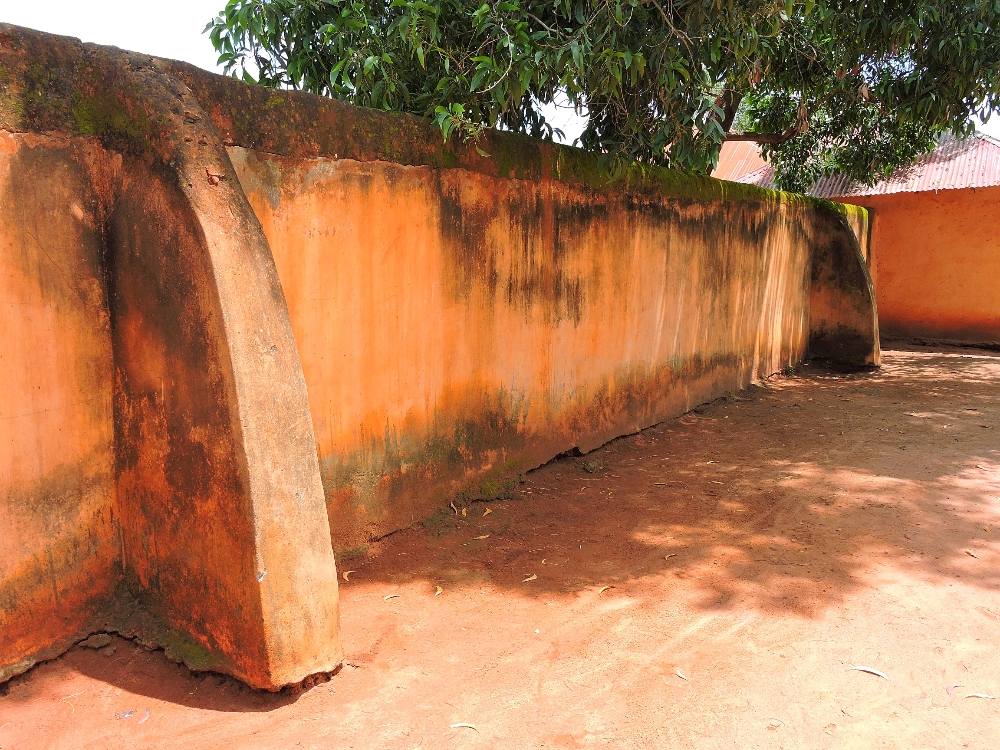
Each King built his palace in accordance with his personal philosophy and tastes, such as one who was a noted supporter of crafts and arts. It was nice to see that his buildings are still being used for that purpose, like the one seen here, where weavers are busy working with some of the longest warps I have ever seen.
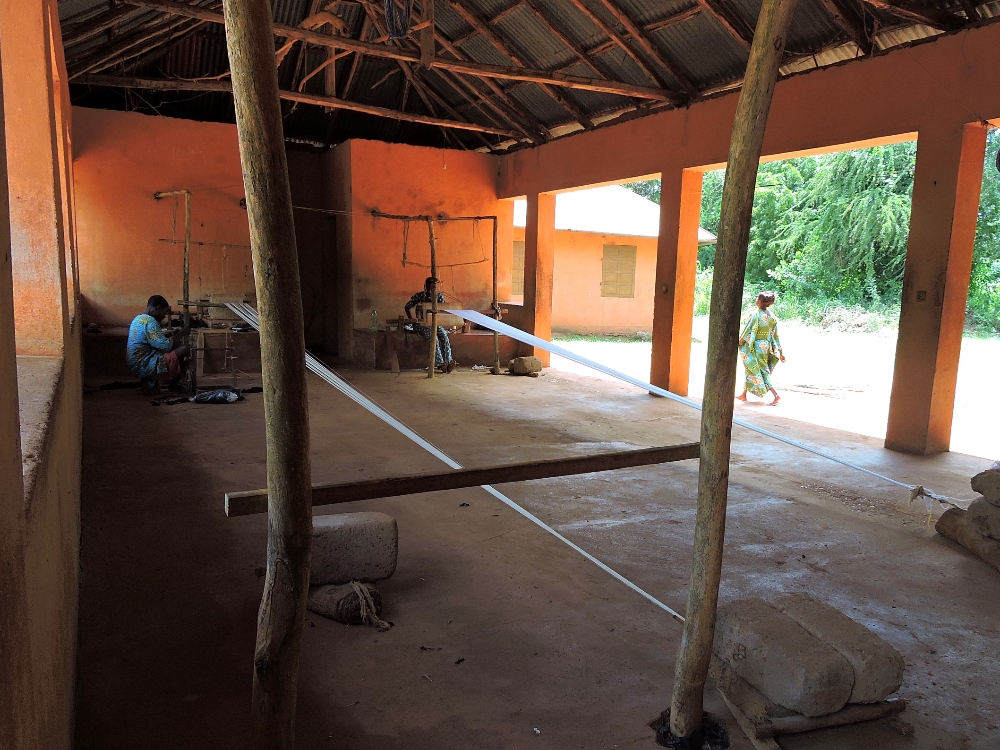
The most famous aspect of the Palaces is their overt use of iconography on their walls and buildings. Without written histories, this was a fairly effective way to announce the characteristics of each individual King and to relate some important aspects of the history of the Kingdom as a whole. Some of this imagery was put forth as carvings on wooden windows and doors.
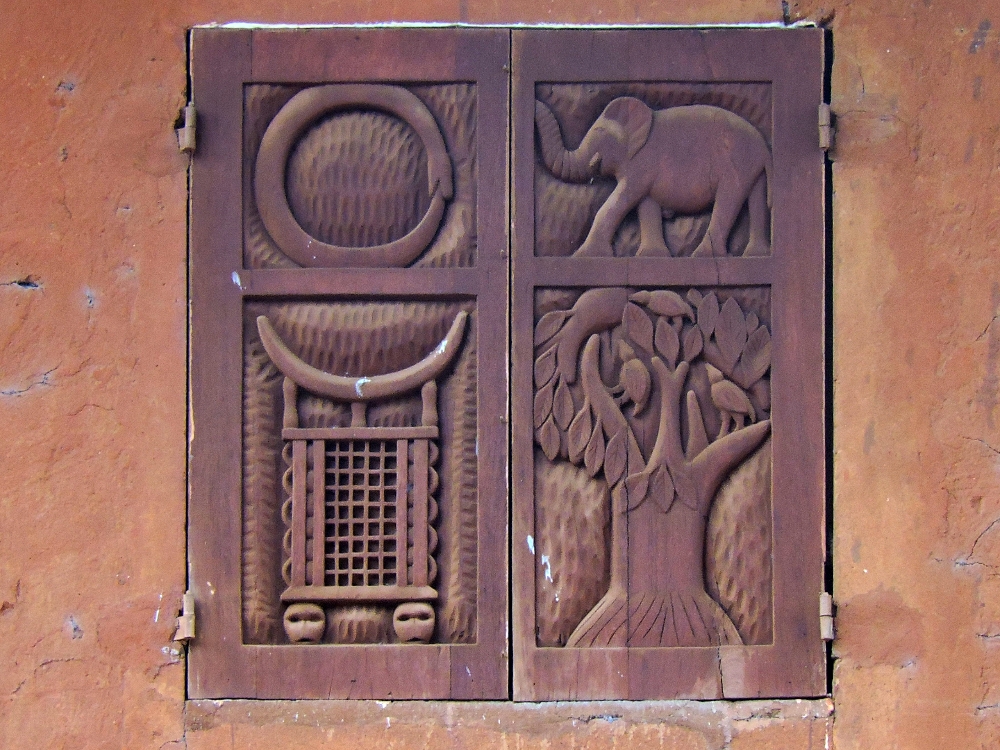
However, the majority were incorporated into numerous relief panels in the walls themselves, created and colored using natural materials. Each King had his own icon, and others represented legends, or important events, such as conquests.
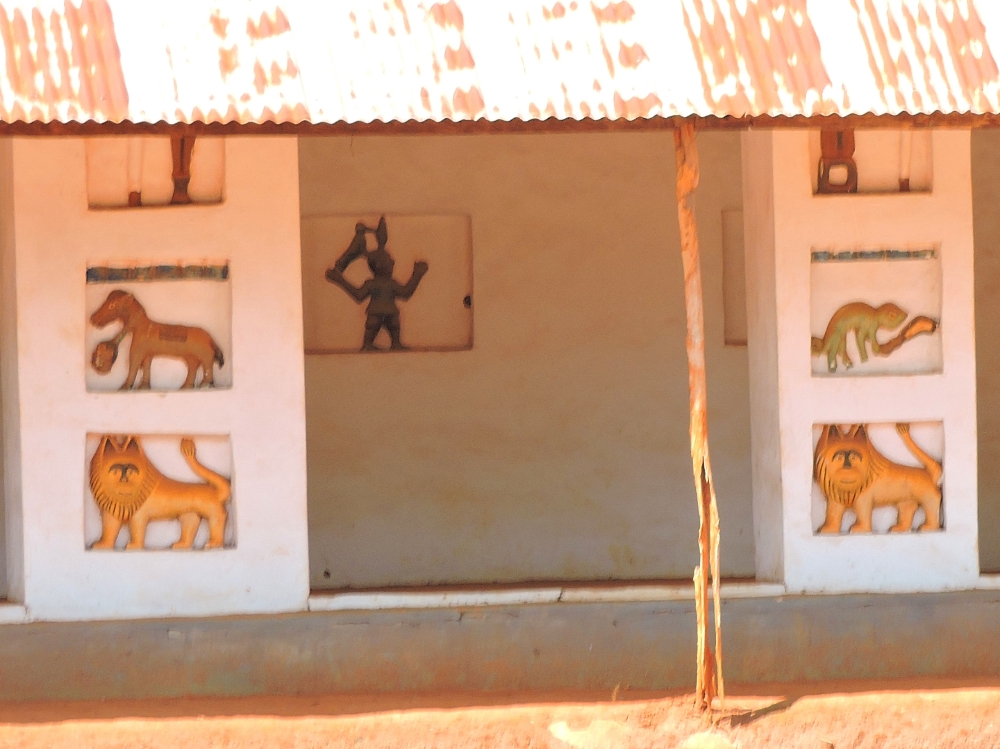
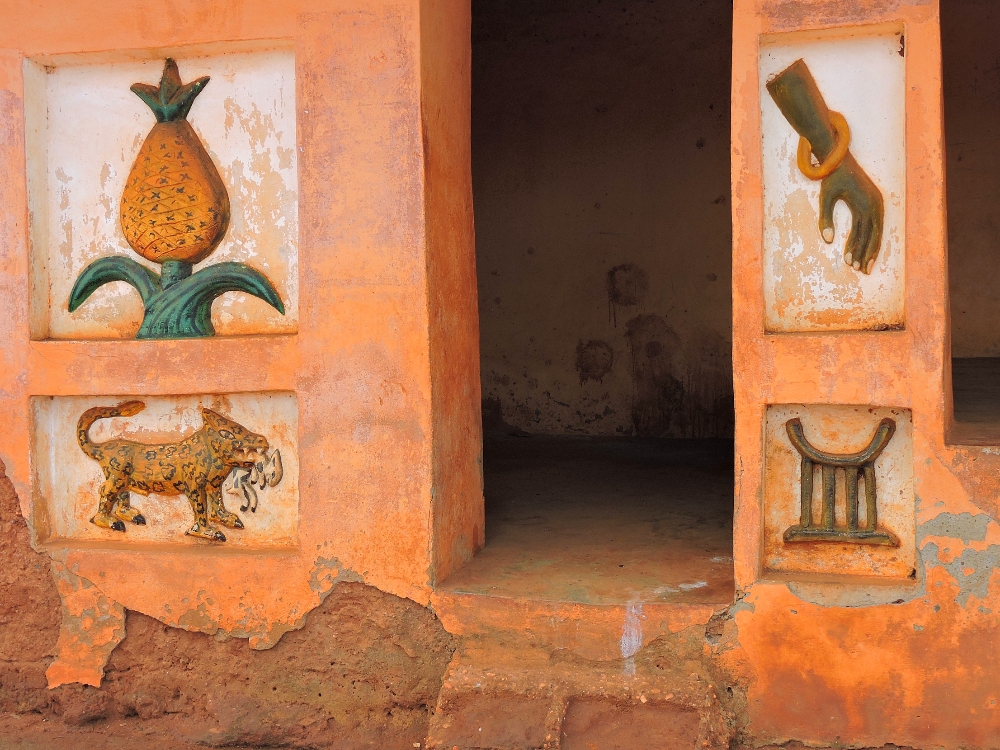
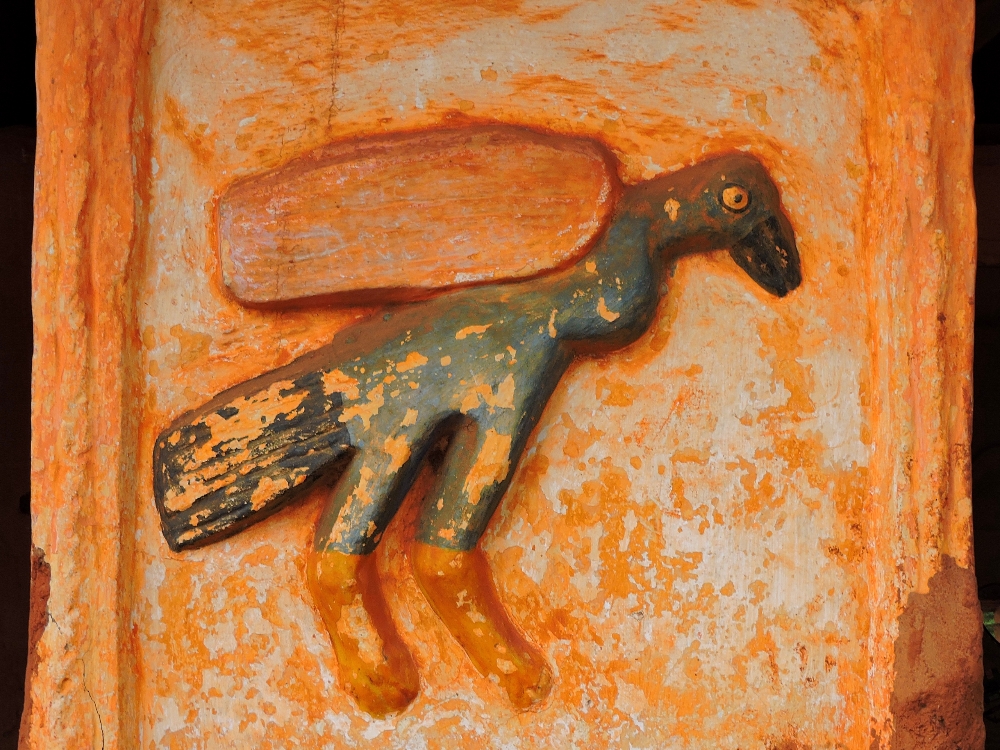
Today the Palaces are in a moderate state of repair, though there have been troubles with weather and fire in the past. What exists now seems like an adequate representation of their original layout and design, with a good balance between restoration and authenticity. Though I did not have the time, or the energy, to see all of the remaining buildings, the ones I did visit, including the largest, which now includes a small museum, gave me an interesting and enjoyable experience. It was also fun to occasionally observe similar iconic reliefs on modern buildings scattered around Benin